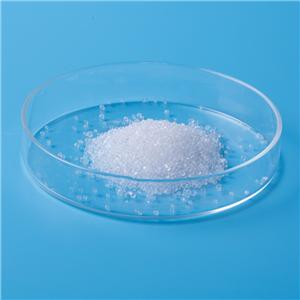Microcapsule coating technology and its application
Microcapsule coating technology is a technology that embeds the core material by the wall material into microcapsules through emulsification, drying, granulation and other processes, in order to achieve the purpose of controlling the release rate of the core material. Microcapsule coating technology uses high molecular polymer film-forming materials to coat dispersed small liquid droplets, solid small particles or gas through a certain physical or chemical method to form a layer of thin film-encapsulated tiny capsules. The solid, liquid and gas substances enclosed inside the capsule are called core materials, active substances or fillers (referred to herein as essential oils or fragrances), and the coating film formed by the polymer material on the surface of the microcapsules is called a wall material or capsule wall. The particle size of the microcapsules is usually in the range of 0.2-2000 microns, and its shape is varied due to the manufacturing method, wall material properties and manufacturing process.
Because essential oils have the characteristics of strong volatility, microcapsule coating technology can protect the flavors and fragrances and increase the stability of essential oils, improve the efficiency of the use of essential oils and the added value of products, so they are used in cosmetics, daily necessities, and feed, food, medicine, agriculture, textiles and other fields, and the application range is becoming more and more extensive.
There are currently more than 200 methods for producing microcapsules. In actual production, the preparation method which are both proper in technology and economic effects should be selected according to the characteristics of essential oils such as volatile and poor heat resistance, as well as the requirements of finished products, application fields and markets. Below are several microcapsule coating techniques commonly used in essential oils:
1. Spray zero drying method
The main process of the spray drying method is to first uniformly disperse the core material in the liquefied wall material solution, and then form an oil-in-water emulsion after homogeneous emulsification treatment. In the spray device, the liquid is dispersed into fine droplets and sprayed into an inert hot gas stream to atomize the mixed liquid. In the high-temperature air flow, the solvent that dissolves the wall material quickly evaporates, causing the droplets to shrink into a spherical shape, and then passes through the drying device to obtain a solid powder capsule.
The spray drying method is currently the most commonly used, most mature, and most suitable microcapsule preparation technology for industrial production. It has the advantages of simple process and good repeatability, and the obtained microcapsule powder has good solubility and dispersion performance. However, there are certain defects, such as high temperature operating conditions are not conducive to embedding of core materials sensitive to high temperature: mainly suitable for the purpose of shielding odor or converting liquid core materials into solid powder form, not suitable for preparing controlled release microcapsules The surface of the microcapsules is a concave and porous unsealed structure, which affects the protection of the core material, which can easily lead to a short shelf life of the product.
The essential oils embedded by this method in recent years include lemon oil, sweet orange oil, peppermint oil, oregano oil, sage oil, cinnamaldehyde, carvacrol,thymol,etc. The wall materials that can be used for oregano oil are porous starch, inulin, gelatin, sucrose, etc.
2. Interface polymerization method
In the interfacial polymerization method, two reactive monomers dissolved in an immiscible solvent undergo a polymerization reaction at the interface between the two, and the resulting wall material covers the core material. This method is not only suitable for embedding water-soluble core materials, but also embedding oil-soluble core materials. The process is simple, the reaction speed is fast, the effect is good, the process is mature and the equipment is relatively simple, the investment cost is low, and it can be carried out at normal temperature. Coated, currently widely used. This method can be used for lavender oil, sandalwood oil, clove oil, etc.
3. Physical Chemistry Method
Physical and chemical methods include oil phase separation method, single coagulation method, composite coagulation method, etc. The process is relatively simple, the embedding efficiency is high, and there are strict requirements on pH and temperature. This method can effectively embed various essential oils, such as thyme oil, rosemary oil, peppermint oil, lemon oil, sweet orange oil, lavender oil, citronella oil, etc. However, the experimental conditions are strictly controlled and the cost is relatively high, which limits Its application in industrial production.




